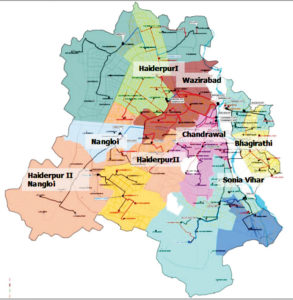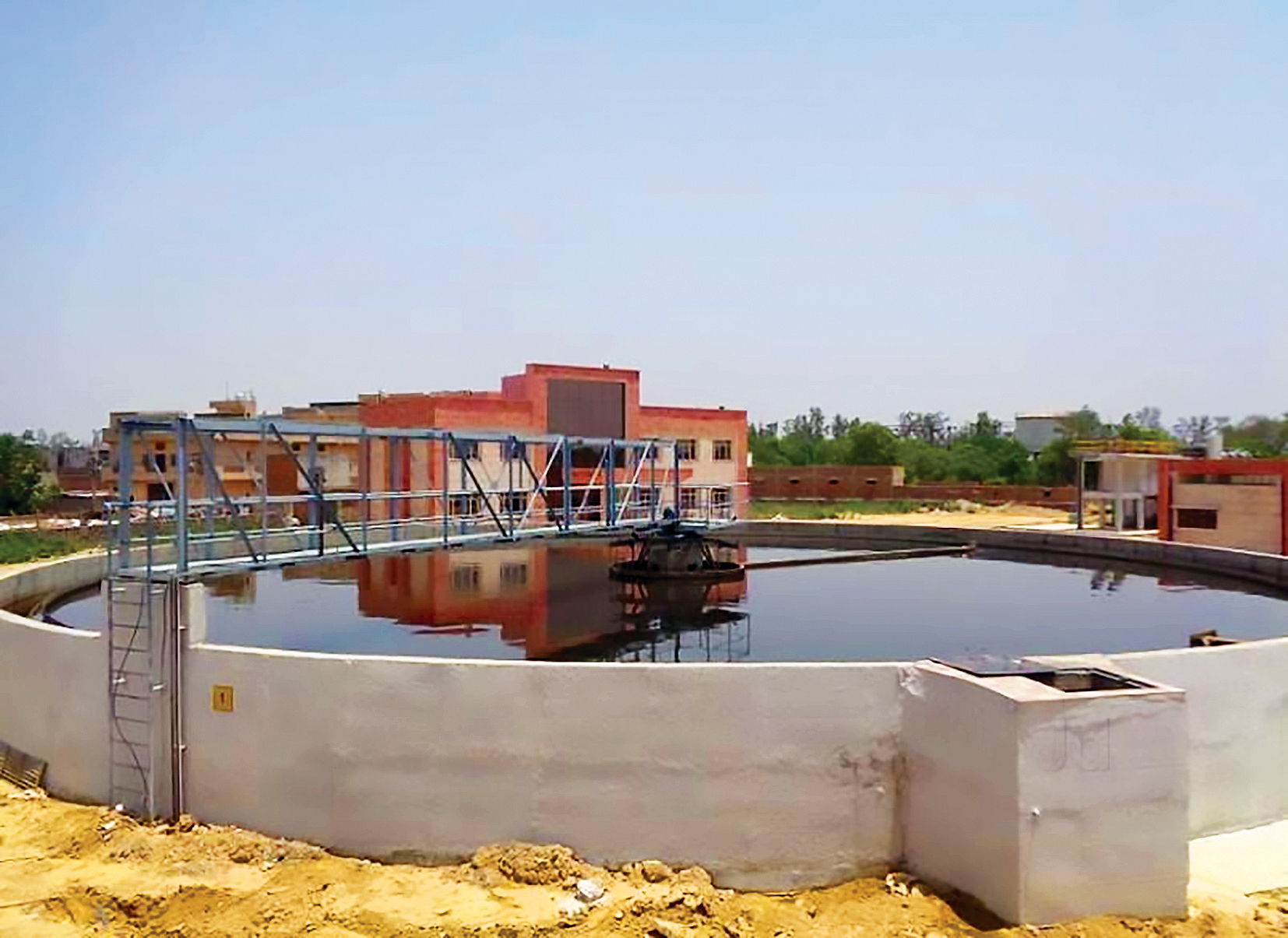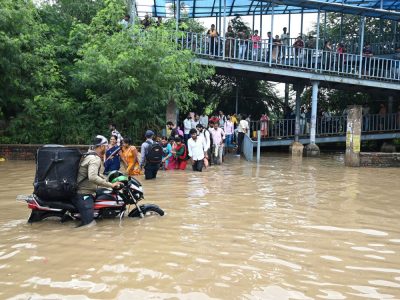Haryana has accused Delhi of taking too much water, while the High Court observed that the former has restricted Yamuna’s flow into the Capital. In all this, the people suffer
The requirement for water is year-round but come summer months, with temperatures soaring above 45 degrees, water is a commodity along with electricity whose consumption shoots up. At this juncture, what Delhi also faces is challenges from its neighbour.
The national Capital, we know has an acute shortage of water. Niti Aayog had warned that by 2020 the ground water could be completely depleted. At present, only 80 million gallons per day (MGD) is supplied through ground water, according to the Delhi Jal Board (DJB).
While the DJB is working on sewage treatment plants (STPs) to be able to provide more water to its residents instead of banking on its neighbours, the plan is still some time away from coming to fruition. The scheme most recently announced for Okhla will reportedly be India’s largest STP, and will cost ₹1,161 crore. When it is functional, it will cater to about 40 lakh residents in Chandni Chowk, Daryaganj, NDMC areas, Nizamuddin, Okhla, Badarpur, Kalkaji, Malviya Nagar, Katwaria Sarai, Lajpat Nagar, Greater Kailash and South Delhi — from Munirka to Badarpur — among others.

For now, what the state has is a water sharing process which sees Haryana providing 584 MGD, and Uttar Pradesh 250 MGD, according to figures provided by the Delhi Jal Board. This brings the total output from the sources to 930-935 MGD while demand, according to the water authority is 1,140 MGD.
The DJB’s own efforts have been to prepare a Summer Action Plan, as before, targeting a peak production of 936 MGD of potable water. This too falls short of the mark.
The water crisis looms every year. Last year, the Haryana government cut the sharing short of what was desired. Chief minister Arvind Kejriwal had said that the city had been receiving 1,133 cusecs (609 MGD) of water from Haryana since 1996, but for the first time in 22 years, the state partially stopped the supply to the national capital.
That was last summer. This time, Haryana Chief Minister Manohar Lal Khattar maintains that Delhi has been provided 1,049 cusecs (564 MGD), much more than the “contractual obligation” of 719 cusecs (386 MGD). He further alleged that Delhi government owed Haryana Rs 100 crore.
Water has led to many a contentious relation between neighbours in India, and the northern neighbours are no different.
In Delhi’s defence, however, its High Court told Haryana that it must ensure water is supplied to the national Capital without any hindrance from ‘bunds’ on river Yamuna at several places from sand mining activity.
The bench comprised of Chief Justice Rajendra Menon and Justice A J Bhambhani gave the direction after a committee constituted by the High Court told the bench that canals carrying water meant for Delhi had obstructions at 11 locations.
The court was also in favour of the committee’s suggestion for installation of flow meters to check the flow of water in river Yamuna. But these were opposed by Haryana, which said it wanted to file its objections to the findings given in the report, which they will do by July 22, as the court directed.
Interestingly, the observations and directions of the bench have come during a hearing of the Delhi Jal Board’s (DJB) application seeking to withdraw all of its earlier pleas for protecting water supply to the national capital. This because the Haryana government has made this as a pre-condition for considering release of water to Delhi.
The DJB tells Patriot that one case is in the Delhi High Court from 2013.
In accordance with undertakings and earlier court orders Haryana has to release 719 cusecs (386 MGD) of water per day into Munak canal, and 330 cusecs (177 MGD) per day in Delhi Sub Branch Canal.
The water which does come from the Yamuna via Haryana ends up at Water Treatment Plant (WTP) of Chandrawal I, II which produces 95 MGD on average serving Central, North, and NDMC regions. Then there’s Wazirabad I, II, III which produces 120 MGD, serving North, Central, South, and North west Delhi; Haiderpur I, II which sources its water from Bhakra storage and Yamuna produces 210 MGD serving NDMC and cantonment, West and South Delhi, and then Okhla which derives its water from Munak Canal, producing about 20 MGD on average, serving South Delhi.
Thus, if the flow is affected due to the activities in the Yamuna river all these sites would be unable to supply water to various parts of Delhi. This means acute shortage which Delhi would be unable to counter, with its own water resources being abysmally low.
Even before the peak of summer, residents of JJ clusters of Delhi complained to us about the lack of drinking water, with about 85% households of Delhi having access to piped water supply. The ones who did receive water from taps said it was not drinkable. Thus, RO bottles are still something that many such clusters and unauthorised colonies have to bank upon.
Sewage use
Delhi Jal Board is actively promoting use of treated effluent to reduce the stress on the demand of potable water in the city. Around 89 MGD of treated effluent is already being supplied for non-potable purposes to various agencies such as NDPL, CPWD, PPCL, DDA, CRRI, NDMC, EDMC, and South DMC for horticulture and power plants cooling etc.
In 2015, a 10 MLD (million litres per day) tertiary treatment plant at Okhla was commissioned and treated effluent of good quality is being supplied for washing of DTC buses at Sukhdev Vihar bus depot.





